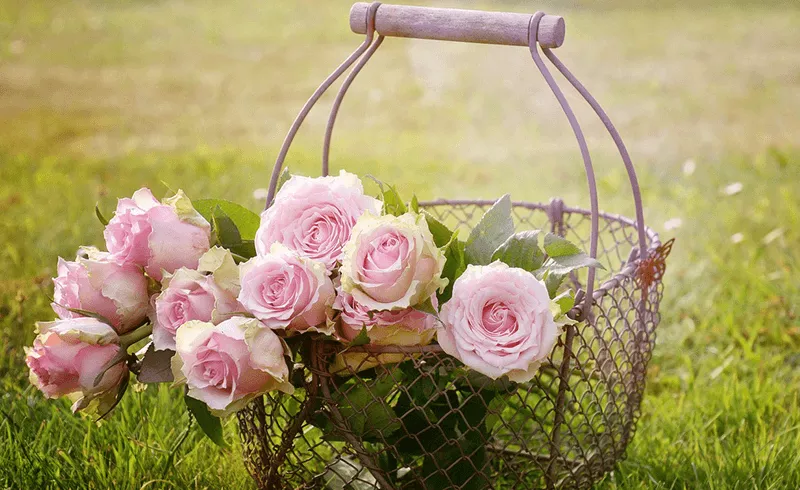
Roses, known for their vibrant colors and enchanting fragrances, are among the most popular flowers worldwide. Growing roses is both an art and a science, requiring a blend of patience, meticulous care, and a deep understanding of horticultural techniques. This guide provides essential insights into selecting, planting, and maintaining roses, turning your garden into a blossoming paradise.
Selecting the Right Varieties
Choosing the right rose varieties is crucial for success, especially considering the climate and specific garden conditions. For instance, gardeners must select heat-tolerant varieties in South Florida due to the warm climate.
Renowned hybridizer Tom Carruth has developed several robust cultivars, such as the Julia Child, a butter gold floribunda known for its disease resistance and strong licorice-and-spice scent, and the Cinco de Mayo floribunda, notable for its unique color blend and sweet-apple fragrance. When choosing roses, consider their mature size, color, and fragrance to ensure they meet your garden’s aesthetic and spatial needs.
Planting Your Roses
The best time to plant roses is when temperatures are mild. In regions with warm climates like the South, planting in early spring or fall ensures that the roses establish roots without the stress of midsummer heat. Roses thrive in full sun, requiring at least six hours of direct sunlight daily.
Ensure the planting site has well-draining soil enhanced with organic matter such as compost. When planting, dig a hole slightly wider than the root ball, place the rose bush, ensure the graft union is just above the soil line, and thoroughly backfill with soil and water.
Maintaining Your Rose Garden
Roses require regular care to flourish. Water new plants deeply to encourage root growth and keep the soil moist but not waterlogged. Fertilize roses with a balanced fertilizer to support healthy growth and abundant blooming. Pruning is essential to maintain shape and promote airflow, which helps prevent fungal diseases like black spots and powdery mildew. It’s also necessary to keep the area around roses clear of grass and weeds to reduce competition for nutrients and water.
Cutting and Enjoying Roses
For those who wish to enjoy roses as cut flowers, it’s best to cut them early in the morning when their water content is highest. Use sharp secateurs to make clean cuts, and place stems in water immediately to preserve freshness. Roses from your garden offer a personal touch and a sense of pride that enhances any occasion, from casual gatherings to grand celebrations.
Dealing with Common Issues
Grass growing around roses can lead to competition for nutrients and may harbor pests and diseases. Clearing a space around each bush and using mulch can prevent grass and weeds encroaching on the roses. In damp climates, keeping the base of the roses free from grass and leaves also helps reduce the risk of fungal diseases, which thrive in moist conditions.
Growing roses can be incredibly rewarding, offering a vibrant and fragrant addition to any garden. By choosing the right varieties for your climate, preparing the soil properly, and providing regular care and maintenance, you can enjoy the beauty of roses year after year. Whether you are a novice or an experienced gardener, roses can bring joy and color to your outdoor space.
Advanced Techniques for Rose Care
Beyond basic care, advanced techniques can significantly enhance the health and vibrancy of your roses. For example, incorporating mycorrhizal fungi into the soil can improve nutrient absorption and boost root growth, leading to more robust, more resilient plants.
Additionally, regular applications of organic matter, such as well-rotted manure or compost, can improve soil structure and increase its ability to retain moisture, which is crucial for roses during dry spells. Seasoned gardeners might also explore grafting techniques to propagate their favorite varieties or enhance the hardiness of delicate specimens by grafting them onto more robust rootstocks.
| Category | Details | Purpose/Benefit |
|---|---|---|
| Variety Selection | Choose roses suitable for your climate and garden space, such as heat-tolerant varieties in warmer regions. | Ensures the roses can thrive in local conditions and meet the aesthetic or functional needs of the garden. |
| Site Preparation | Select a location with full sun (at least six hours per day) and well-draining soil. Amend soil with organic matter. | Promotes healthy growth and flowering by providing optimal light and soil conditions. |
| Planting | Plant during mild temperatures; ensure the root graft is just above the soil line; water thoroughly after planting. | Helps establish a strong root system before extreme weather conditions, reducing stress on the plant. |
| Maintenance | Water regularly, fertilize during the growing season, and prune to maintain shape and promote airflow. | Supports robust growth, maximizes blooming potential, and prevents diseases like black spot and powdery mildew. |
| Pest Control | Monitor for pests and diseases; use mulch to suppress weeds and maintain soil moisture. | Reduces the likelihood of pest invasions and diseases, ensuring healthier plants and cleaner blooms. |
This table provides a concise guide to the essentials of rose gardening, making it easier for gardeners to understand and implement best practices for cultivating beautiful and healthy roses.
Enhancing Your Garden’s Aesthetic with Roses
Roses can serve as stunning focal points within garden design. By understanding different varieties’ growth habits and sizes, gardeners can effectively use roses to create visual interest and define spaces. Climbing roses, for example, can be trained to cover walls, fences, or trellises, adding height and drama to garden landscapes.
Ground cover roses are excellent for filling bare spots and softening edges along paths and garden borders. For a continuous display of color, intersperse roses with perennials that bloom at different times, ensuring that your garden remains vibrant throughout the growing season.
Community and Educational Aspects of Rose Gardening
Rose gardening also offers wonderful opportunities for community engagement and education. Many gardeners enjoy sharing cuttings and gardening tips with neighbors, which can help foster community ties and spread the joy of gardening.
Local gardening clubs often offer workshops on rose care, providing a platform for novice and experienced gardeners to learn and grow their skills. Participating in these activities can deepen your knowledge, enhance your gardening practice, and connect you with like-minded individuals who share your passion for roses and gardening.

Bob Green, a passionate lawn care enthusiast with over two decades of landscaping experience, is this website’s proud owner. His vast knowledge of horticulture and dedication to helping homeowners maintain beautiful lawns are reflected in the valuable content he shares on his platform. John has always been interested in Agrostology.









